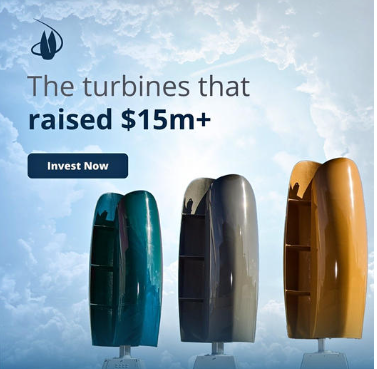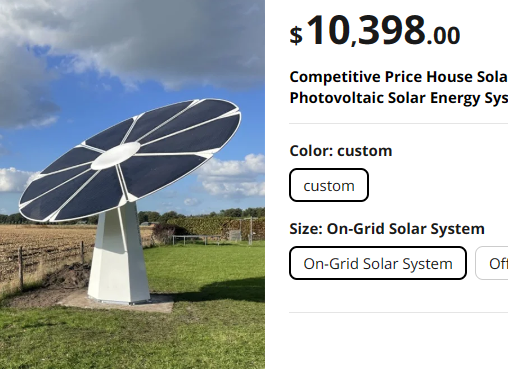Flower Turbines Looking for More Investors

In fact, until about a decade ago, there were completely legitimate attempts to commercialize what was called “small wind.” At that point, however, it was realized that the costs of building, installing, and maintaining systems like this would literally never be recouped by the owner, and that the entire enterprise was doomed, or, to put it more accurately, limited to a customer base that didn’t care about the economics.
People like these do exist, btw. There are luxury wristwatches that sell for six figures, that tell time no better than something you can buy in a drug store.
At right is a solar energy device that automatically folds up at night. Does that do anything of practical value? Of course not; in fact, it only adds moving parts that eventually fail. The price of electricity per kWh will be astronomical. Apparently, some people simply do not care.
Investors, however, want profits, and profits derived from high-volume sales of products with decent operating margins. In the case of the Flower Turbine, this is as improbable as the Earth’s getting hit by an asteroid the size of Utah.


Dear Mr. Shields,
Responsible journalism and writing requires that you exert minimal effort to read a company’s website for more information and to attempt to contact a company for comment.
Making low cost renewable energy is a challenge. We have improved the efficiency of vertical axis turbines over what was thought possible by aerodynamic innovations. Getting costs down is still a challenge. One of the ways we are doing that, even before getting into mass production, is our patented bouquet effect (our turbines perform better when grouped close together in a cluster), so that, for example, four of our turbines correctly placed produce the same amount of electricity as 8 turbines separated from each other. This is a significant innovation that will have a serious effect on cost effectiveness. It is unfortunate that reviews like yours will only slow down the process of reducing costs through the mass production part of the cost reduction effort by discouraging the volume of customers needed to achieve that.
I have heard your claim about the supposed increase in efficiency associated with bunching the devices close together, and I’m skeptical. Is there some non-proprietary study on fluid dynamics that supports this idea to which you can direct me?